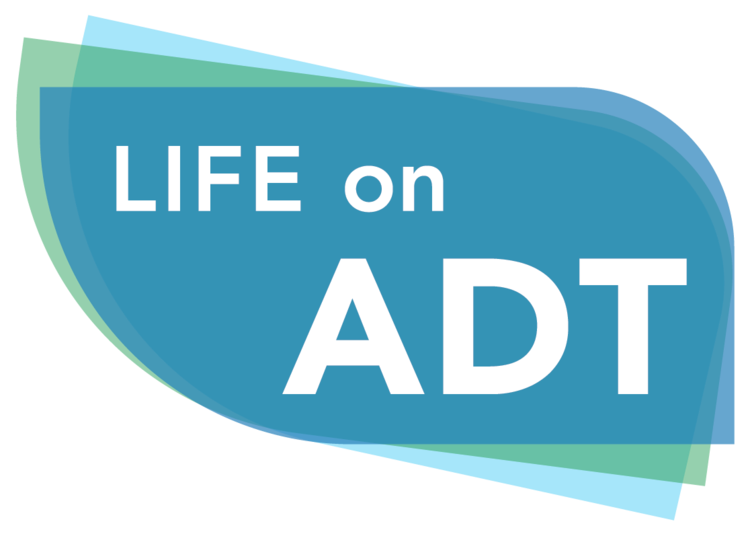This is probably the most common question we get from patients starting on ADT. For patients with advanced metastatic cancer, the answer is relatively easy…but not particularly encouraging. Typically, those men stay on ADT for the remainder of their lives.
But what about patients going for radiotherapy (RT) to the prostate gland with curative intent?
There are papers exploring this topic going back to the middle of the last century. Recently, a consortium of researchers conducted a meta-analysis of the 12 most relevant RT studies spanning several decades and collectively involving over 10,000 patients. There have been a lot of changes in the way RT is administered and dosed over those decades, so doing a pooled analysis was rather tricky. In a companion paper, the researchers looked at three studies in greater depth to assess whether RT treatment modality made a difference in terms of metastasis-free survival.
The authors came down with a strong recommendation for adding ADT to RT for men with medium- to high-risk disease, irrespective of the RT dose.
But that doesn’t get to the question of how long a patient should be on ADT. Here the authors distinguish between ADT used in the neoadjuvant mode, where it is started before the RT, or in the adjuvant mode, where it is administered during RT and continued after the RT has ended.
The researchers found no added benefit for neoadjuvant ADT that ran for more than two months before starting RT. In other words, for low-risk disease, neoadjuvant ADT can be short term (i.e., in the range of just 4 to 6 months).
In the adjuvant mode, for patients with medium- to high-risk disease receiving external beam RT, the studies point to a benefit of staying on ADT for > 18 months, with an estimate of the best benefit of 26 or more months. However, for patients receiving external beam RT along with a brachy boost, the minimum duration for optimal effects was ~12 months.
We would also like to flag a brief but insightful complementary essay by Allen Edel, in which the findings on brachy boost are discussed. Allen Edel is a prostate cancer patient and professional writer, with a strong background in science. His essay can be found at https://www.prostatecancer.news/2022/01/optimal-duration-of-adjuvant-adt.html#comment-form. Edel discusses the trade-off between living with the side effects of ADT for a prolonged period of time versus risking the side effects from a brachy boost. Clearly, patients need to be aware of all the risks when making a decision about how long they wish to be on ADT and what type of RT would be most effective in controlling their cancer.
Edel continues with a series of questions that fall out from the two papers. These questions recognize that advances in diagnostic imaging are revealing cancer in soft tissue beyond the prostate gland in men who, in the past, would have been classified as having relatively low-risk disease. This suggests that the answer to the question of “how long should I be on ADT?” will change as both diagnostic and therapeutic modalities improve.
Edel regularly posts blog entries on prostate cancer research at www.prostatecancer.news. His essays deal with all aspects of prostate cancer and not just ADT. We invite you to follow his postings at www.prostatecancer.news as they are some of the best summaries we know of on clinical research for patients with prostate cancer.
To read the study abstract for meta-analysis, see: https://pubmed.ncbi.nlm.nih.gov/35051385/
To read the study abstract for the 3-cohort analysis, see: https://pubmed.ncbi.nlm.nih.gov/35050303/
References:
Kishan AU, Sun Y, Hartman H, Pisansky TM, Bolla M, Neven A, Steigler A, Denham JW, Feng FY, Zapatero A, Armstrong JG, Nabid A, Carrier N, Souhami L, Dunne MT, Efstathiou JA, Sandler HM, Guerrero A, Joseph D, Maingon P, de Reijke TM, Maldonado X, Ma TM, Romero T, Wang X, Rettig MB, Reiter RE, Zaorsky NG, Steinberg ML, Nickols NG, Jia AY, Garcia JA, Spratt DE; MARCAP Consortium group. Androgen deprivation therapy use and duration with definitive radiotherapy for localised prostate cancer: an individual patient data meta-analysis. Lancet Oncol. 2022 Jan 17:S1470-2045(21)00705-1. doi: 10.1016/S1470-2045(21)00705-1. Epub ahead of print. PMID: 35051385.
Kishan AU, Steigler A, Denham JW, Zapatero A, Guerrero A, Joseph D, Maldonado X, Wong JK, Stish BJ, Dess RT, Pilar A, Reddy C, Wedde TB, Lilleby WA, Fiano R, Merrick GS, Stock RG, Demanes DJ, Moran BJ, Tran PT, Martin S, Martinez-Monge R, Krauss DJ, Abu-Isa EI, Pisansky TM, Choo CR, Song DY, Greco S, Deville C, McNutt T, DeWeese TL, Ross AE, Ciezki JP, Tilki D, Karnes RJ, Tosoian JJ, Nickols NG, Bhat P, Shabsovich D, Juarez JE, Jiang T, Ma TM, Xiang M, Philipson R, Chang A, Kupelian PA, Rettig MB, Feng FY, Berlin A, Tward JD, Davis BJ, Reiter RE, Steinberg ML, Elashoff D, Boutros PC, Horwitz EM, Tendulkar RD, Spratt DE, Romero T. Interplay Between Duration of Androgen Deprivation Therapy and External Beam Radiotherapy With or Without a Brachytherapy Boost for Optimal Treatment of High-risk Prostate Cancer: A Patient-Level Data Analysis of 3 Cohorts. JAMA Oncol. 2022 Jan 20. doi: 10.1001/jamaoncol.2021.6871. Epub ahead of print. PMID: 35050303.
